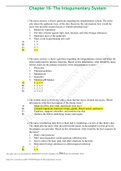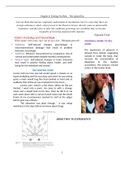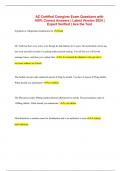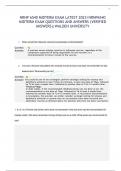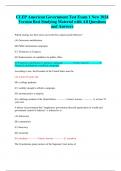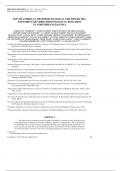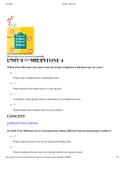Exam (elaborations)
ATI Chapter 16- The Integumentary System/ Questions and Answers with Explanations, All Correct, Download to Score A
- Course
- NURSING
- Institution
- Southern Technical College
Chapter 16- The Integumentary System 1. The nurse answers a client's questions regarding the integumentary system. The client asks about the epidermis layer of the skin. Based on this informati on, how would the nurse best describe stratum basale or stratum germinativum? 1. Relatively waterproof 2....
[Show more]
